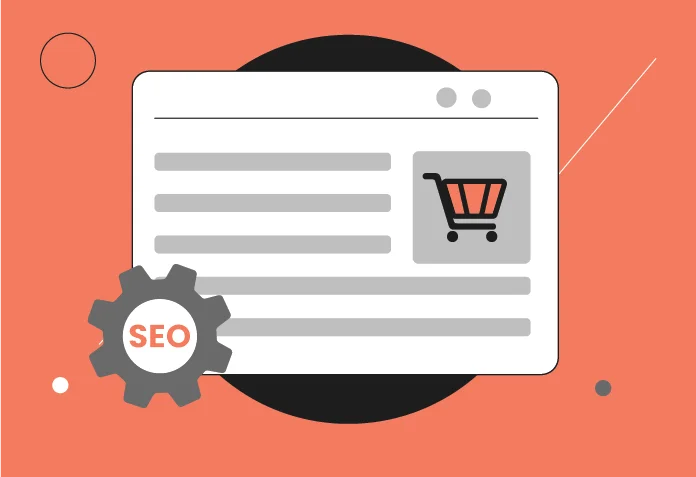Are you looking to grow your business in the digital world? Have you heard of growth hacking? Growth hacking is a term that has gained popularity in recent years, especially in the world of digital marketing. It is a process of experimenting and testing various marketing strategies to achieve rapid growth for a business.

Growth hacking is not just limited to startups. It can be applied to any business that wants to grow quickly and efficiently. The goal of growth hacking is to find the most effective and efficient ways to acquire and retain customers. It involves using data-driven techniques, such as A/B testing, to optimize marketing campaigns and improve conversion rates.
If you want to stay ahead of the competition in the digital world, it’s essential to understand what growth hacking is and how it can benefit your business. In this article, we will explore the basics of growth hacking, including its definition, principles, and strategies. By the end of this article, you will have a better understanding of what growth hacking is and how it can help you achieve rapid and sustainable growth for your business.
Understanding Growth Hacking

As a digital marketer, you may have heard the term “growth hacking” thrown around a lot lately. But what exactly is growth hacking and why is it important?
In simple terms, growth hacking is a process of rapid experimentation across marketing channels to identify the most effective ways to grow a business. It was coined by Sean Ellis, who is known as the “father of growth hacking”.
The goal of growth hacking is to find the most efficient and effective ways to grow a business, often by using unconventional and creative methods. It’s a data-driven approach that focuses on finding solutions that are simple, scalable, and cost-effective.
A growth hacker is someone who uses this approach to drive growth for a business. They are typically data-driven, analytical, and creative problem solvers. They use a combination of marketing, product development, and customer experience to drive growth.
In summary, growth hacking is a process of rapid experimentation to find the most efficient and effective ways to grow a business. It’s a data-driven approach that focuses on finding simple and scalable solutions. A growth hacker is someone who uses this approach to drive growth for a business.
The Role of Digital Marketing in Growth Hacking

Digital marketing plays a crucial role in growth hacking. Growth hacking is a process of rapid experimentation across various marketing channels to identify the most effective ways to grow a business. Digital marketing provides a vast array of channels that can be used for growth hacking, including marketing, content, SEO, and social media.
Marketing is a critical component of growth hacking, as it involves promoting and selling products or services to customers. Digital marketing provides an array of marketing channels, including email marketing, search engine marketing, display advertising, and more. These channels can be used to quickly test and iterate different marketing strategies to identify the most effective ones for growth.
Content marketing is another essential aspect of growth hacking. Creating valuable content that resonates with your target audience can help attract and retain customers. Digital marketing provides a wealth of tools and platforms that can be used to create and distribute content, including blogs, social media, and video platforms.
SEO is also a crucial component of growth hacking. Optimizing your website and content for search engines can help drive traffic and increase visibility. Digital marketing provides a range of SEO tools and strategies, including keyword research, on-page optimization, link building, and more.
Finally, social media is an essential channel for growth hacking. Social media platforms provide a vast audience that can be targeted with specific messaging and content. Digital marketing provides a range of social media tools and strategies, including social media advertising, influencer marketing, and social listening.
Key Elements of Growth Hacking

Growth hacking is a process of rapid experimentation across marketing channels and product development to identify the most effective and efficient ways to grow a business. Here are the key elements of growth hacking that you should consider when developing your growth strategy:
Strategy and Goals
To achieve growth, you need a clear growth strategy and goals that are aligned with your business objectives. You should identify your target audience, analyze your competitors, and define your unique value proposition to create a roadmap for growth.
Testing and Optimization
Testing and optimization are critical components of growth hacking. You should conduct A/B testing to identify the most effective marketing channels and optimize your conversion rates to increase your customer acquisition and retention.
Data and Analytics
Data and analytics are essential for measuring the effectiveness of your growth strategy. You should use tools like Google Analytics to track your website traffic, user behavior, and conversion rates to gain insights and make data-driven decisions.
Team and Resources
Building a growth team with the right skills and resources is crucial for achieving growth. You should assemble a team that includes marketers, developers, designers, and data analysts to execute your growth strategy effectively.
Content and Social Media Marketing
Content and social media marketing are powerful tools for driving growth. You should create high-quality content that resonates with your target audience and use social media platforms like Facebook, Twitter, LinkedIn, Instagram, and YouTube to amplify your reach.
Tools and Techniques
There are various growth hacking tools and techniques that you can use to accelerate your growth. Some examples include landing pages, email marketing, SEO, PPC advertising, and influencer marketing.
Acquisition and Retention
Acquiring new customers and retaining existing ones are both critical for growth. You should focus on creating a customer acquisition strategy that includes lead generation, nurturing, and conversion, as well as a retention strategy that includes customer engagement, loyalty, and advocacy.
Referrals and Word-of-Mouth
Referrals and word-of-mouth marketing are powerful drivers of growth. You should leverage your existing customer base to create a referral program that incentivizes your customers to refer their friends and family to your business.
Case Studies of Successful Growth Hacking

Growth hacking is a relatively new term that refers to the process of using creative and innovative techniques to grow a business quickly. In the world of digital marketing, growth hacking has become an essential tool for startups and established businesses alike. In this section, we will explore some of the most successful growth hacking case studies.
Airbnb and Craigslist
Airbnb is a popular online platform that allows people to rent out their homes or apartments to travelers. In the early days, Airbnb faced a significant challenge in attracting hosts to the platform. To solve this problem, Airbnb’s growth team turned to Craigslist, a well-established online classifieds site. The team created a tool that allowed Airbnb hosts to post their listings on Craigslist with just a few clicks. This strategy proved to be very successful, and within a year, Airbnb’s user base grew from 10,000 to 100,000.
Dropbox and Referral Program
Dropbox is a cloud storage company that allows users to store and share files online. In 2008, Dropbox was struggling to attract new users. To address this issue, Dropbox created a referral program that rewarded users for inviting their friends to sign up for the service. The referral program was a massive success, and within 15 months, Dropbox’s user base grew from 100,000 to 4 million.
Uber and Its Growth Strategy
Uber is a ride-sharing app that has revolutionized the transportation industry. Uber’s growth strategy is based on a combination of aggressive marketing, strategic partnerships, and innovative technology. Uber has partnered with companies like Spotify, American Express, and Starwood Hotels to offer exclusive deals to their customers. Additionally, Uber has developed a range of innovative technologies, such as surge pricing and real-time driver tracking, that have helped the company to grow rapidly.
LinkedIn and Professional Networking
LinkedIn is a social networking platform that is designed for professionals. LinkedIn’s growth strategy is based on providing users with a range of tools and features that help them to build their professional networks. LinkedIn has developed a range of tools, such as its “People You May Know” feature, that help users to connect with other professionals in their industry. Additionally, LinkedIn has developed a range of content marketing tools, such as its “Pulse” platform, that help users to establish themselves as thought leaders in their field.
Challenges and Solutions in Growth Hacking
Growth hacking is a complex and challenging process that requires a lot of effort and dedication. There are several challenges that you may face when trying to grow your business through growth hacking. However, with the right solutions, you can overcome these challenges and achieve your goals.
Challenges
One of the biggest challenges in growth hacking is identifying the right channels to focus on. With so many channels available, it can be difficult to determine which ones will be most effective for your business. Another challenge is creating a successful growth strategy. This requires a deep understanding of your target audience, as well as the ability to identify and leverage growth opportunities.
Another challenge is keeping up with the rapidly changing digital landscape. As new technologies emerge and consumer behavior evolves, it’s important to adjust and adapt your growth strategies accordingly. Finally, measuring the success of your growth hacking efforts can be a challenge. It’s important to track and analyze data to determine what’s working and what’s not.
Solutions
To overcome these challenges, it’s important to have a solid plan in place. This includes identifying your target audience, setting clear goals, and developing a growth strategy that aligns with your business objectives. It’s also important to stay up-to-date with the latest trends and technologies, and to adjust your strategies accordingly.
Another key solution is to experiment and test different growth tactics. This can help you identify what works best for your business, and refine your strategies over time. It’s also important to track and analyze data to measure the success of your efforts, and to use this information to make data-driven decisions.
Finally, it’s important to stay focused and dedicated to your growth hacking efforts. This requires a willingness to learn, adapt, and iterate as you go along. With the right mindset and approach, you can overcome the challenges of growth hacking and achieve success in the digital marketplace.
Future of Growth Hacking
As the digital landscape continues to evolve, so does the practice of growth hacking. The future of growth hacking is all about finding new and innovative ways to drive exponential growth for businesses.
One of the key trends in growth marketing is the use of artificial intelligence (AI) and machine learning (ML) to automate and optimize marketing campaigns. By leveraging data and analytics, businesses can create more personalized and targeted campaigns that resonate with their target audience.
Another trend in growth marketing is the use of social media influencers to promote products and services. Influencer marketing has become increasingly popular in recent years, as businesses look for new ways to reach their target audience and build brand awareness.
Looking further into the future, we can expect to see growth hacking become even more integrated with other areas of digital marketing, such as search engine optimization (SEO) and content marketing. By taking a holistic approach to digital marketing, businesses can create a more cohesive and effective strategy for driving growth.
Overall, the future of growth hacking is bright, with endless possibilities for businesses looking to achieve exponential growth. By staying up-to-date with the latest trends and technologies, businesses can continue to push the boundaries of what’s possible in the world of digital marketing.
Conclusion
Growth hacking is a methodology that focuses on rapid experimentation and optimization to achieve growth in digital marketing. It involves using a combination of marketing, product, and data-driven techniques to acquire and retain customers, increase revenue, and improve the overall performance of a business.
To successfully implement growth hacking, you need to have a deep understanding of your target audience, their needs, and behavior. You also need to be agile and willing to experiment with different strategies and tactics to find what works best for your business.
Some of the key elements of growth hacking include:
- A focus on metrics and data-driven decision making
- A willingness to try new things and take risks
- A commitment to continuous learning and improvement
- A collaborative approach that involves cross-functional teams working together towards a common goal
By adopting a growth hacking mindset, you can achieve significant results in your digital marketing efforts, whether you are a startup or an established business. However, it’s important to remember that growth hacking is not a silver bullet and requires ongoing effort and experimentation to be successful.





